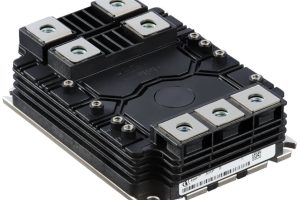
H brings the total to three gen 7 classes in two voltage ranges:
H7 in 650V and 1.2kV, T7 in in 650V and 1.2kV, and S7 in 1.2kV.
“T7 and S7 both have defined SCWT [short-circuit withstand time], a specific requirements for a slow switching application, typically drive applications,” the company told Electronics Weekly. “In H7, we sacrificed the SCWT capability to get the highest performance device at the highest switching conditions – normally required with applications such as: solar string inverters, electric vehicle charging stations and energy storage systems.”
It singled out the NPC1 (neutral-point-clamped) topology as particularly suitable.
 Co-packaged with all gen 7 IGBTs (so far) is a full-rated ‘EC7’ emitter-controlled diode.
Co-packaged with all gen 7 IGBTs (so far) is a full-rated ‘EC7’ emitter-controlled diode.
Picking the 650V 498W (25°C, 249W 100°C) IKQ120N65EH7 almost at random, it comes in a TO-247 Plus package (top image) with 0.23K/W typical junction-to-case for the IGBT and 0.31K/W for the diode.
Operation is expected between 16 and 100kHz.
Again typically, 120A saturation is 1.4V at 25°C and 1.6V at 175°C.
Total switching energy is ~8-10mJ (120A 400V)
On the drive side, typical gate charge is 251nCQ (15Vg, 520Vc, 120A Ic).
Diode peak reverse recovery current fall rate is ~2,380A/µs (400V 120A Rg=10Ω), and diode reverse recovery energy is 0.46mJ (400V 120A 25°C) or 1.38mJ (175°C).
Applications listed for this device extend to industrial un-interruptable PSUs and welders.
Current ratings in the 650V H7 family range across 40A to 150A and packages across TO-247-3 HCC, TO-247-4, TO-247-3 Plus (including the one above) and TO-247-4 Plus.
The 4pin TO-247 packages “not only reduce switching losses, but also offer benefits such as lower voltage over-shoot, minimised conduction losses and the lowest reverse current loss,” said Infineon.
Moisture resistance is JEDEC47/20/22 qualified for industrial “according to the relevant tests, especially HV-H3TRB” it added.
 Electronics Weekly Electronics Design & Components Tech News
Electronics Weekly Electronics Design & Components Tech News



